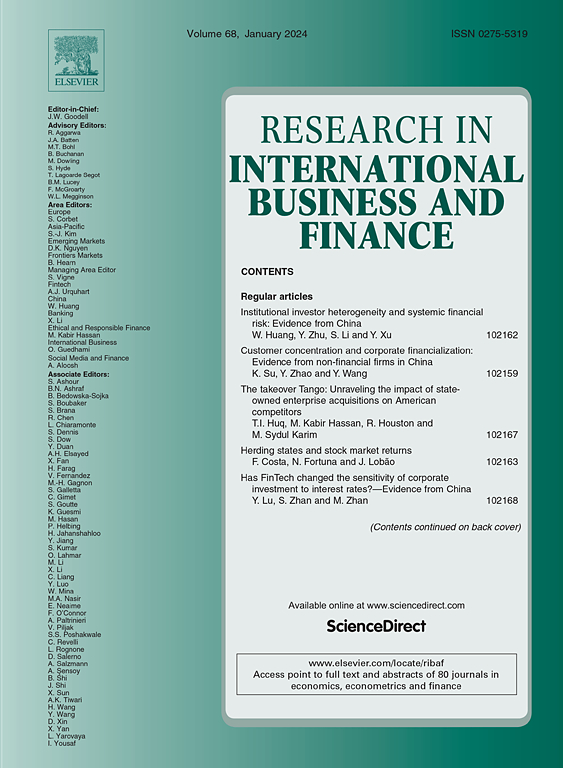The hybrid monetary policy rule in China’s transition period
IF 6.3
2区 经济学
Q1 BUSINESS, FINANCE
Research in International Business and Finance
Pub Date : 2025-02-27
DOI:10.1016/j.ribaf.2025.102846
引用次数: 0
Abstract
This paper conducts a comprehensive analysis of China's monetary policy rule during its transition period. We theoretically demonstrate the equivalence between quantity-based and price-based monetary policy rules. On this basis, we propose a novel quantity-price-hybrid monetary policy rule that aligns with China’s monetary policy practices, offering significant theoretical and practical contributions to understand the monetary policy operations in China’s transition period. Our theoretical framework yields two pivotal insights: First, when interest rate was below the equilibrium level under China's historical interest-rate control circumstances, the existence of the quantity-price-hybrid monetary policy rule explains how excess money supply coexisted with price stability without hyperinflation. Second, we derive a modified Taylor principle, demonstrating that monetary authorities can achieve price stability through interest rate adjustments smaller than inflation fluctuations. Empirical analysis for China strongly supports these theoretical propositions. Now, as the interest-rate liberalization have been largely promoted and the liquidity landscape has been reversed, our findings underscore the growing necessity for China to transition towards price-based monetary policy management. This research provides critical analytical tools and policy implications for economies navigating similar transitional challenges.
求助全文
约1分钟内获得全文
求助全文
来源期刊

Research in International Business and Finance
BUSINESS, FINANCE-
CiteScore
11.20
自引率
9.20%
发文量
240
期刊介绍:
Research in International Business and Finance (RIBAF) seeks to consolidate its position as a premier scholarly vehicle of academic finance. The Journal publishes high quality, insightful, well-written papers that explore current and new issues in international finance. Papers that foster dialogue, innovation, and intellectual risk-taking in financial studies; as well as shed light on the interaction between finance and broader societal concerns are particularly appreciated. The Journal welcomes submissions that seek to expand the boundaries of academic finance and otherwise challenge the discipline. Papers studying finance using a variety of methodologies; as well as interdisciplinary studies will be considered for publication. Papers that examine topical issues using extensive international data sets are welcome. Single-country studies can also be considered for publication provided that they develop novel methodological and theoretical approaches or fall within the Journal''s priority themes. It is especially important that single-country studies communicate to the reader why the particular chosen country is especially relevant to the issue being investigated. [...] The scope of topics that are most interesting to RIBAF readers include the following: -Financial markets and institutions -Financial practices and sustainability -The impact of national culture on finance -The impact of formal and informal institutions on finance -Privatizations, public financing, and nonprofit issues in finance -Interdisciplinary financial studies -Finance and international development -International financial crises and regulation -Financialization studies -International financial integration and architecture -Behavioral aspects in finance -Consumer finance -Methodologies and conceptualization issues related to finance
 求助内容:
求助内容: 应助结果提醒方式:
应助结果提醒方式:


